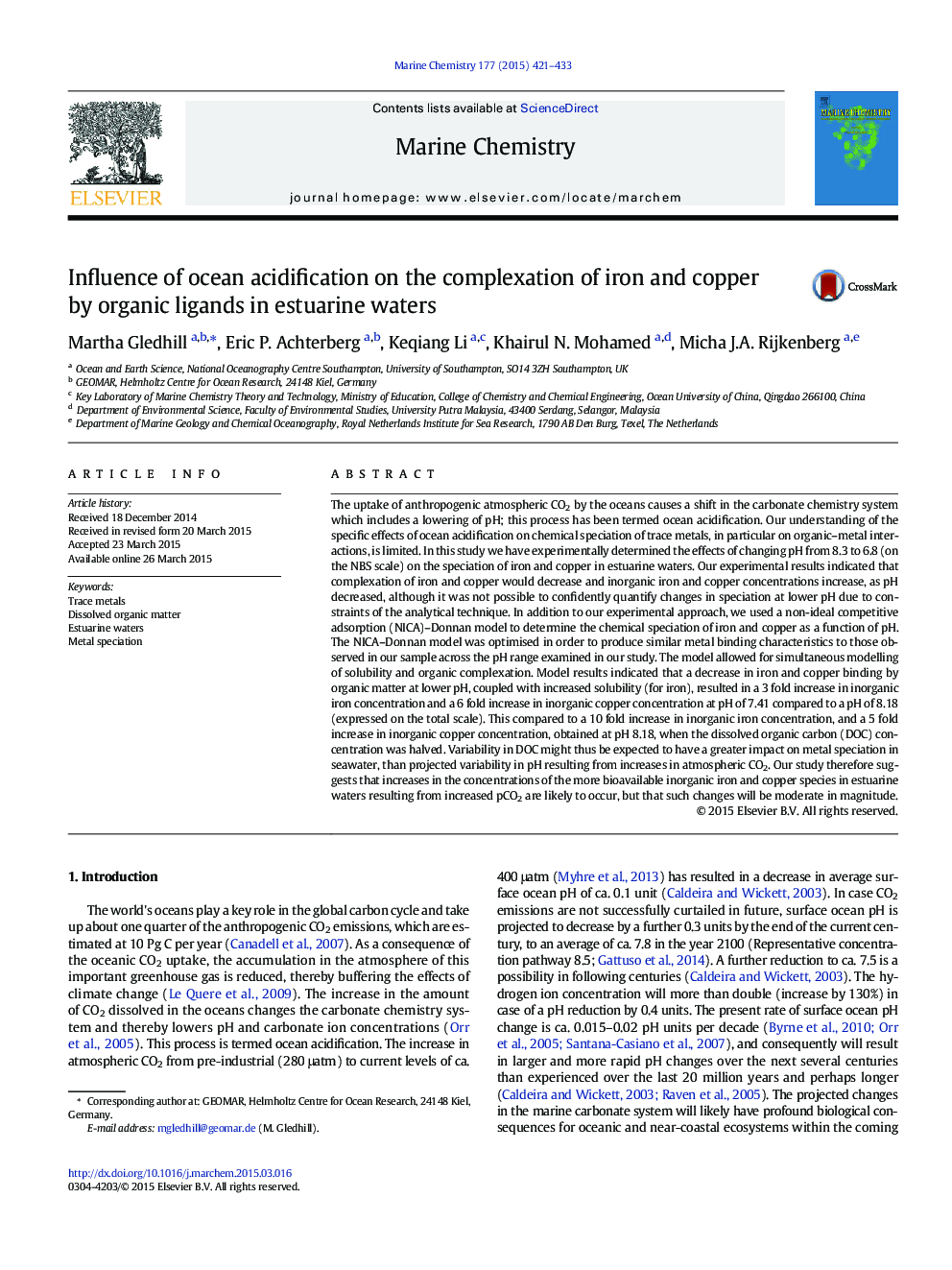| Article ID | Journal | Published Year | Pages | File Type |
|---|---|---|---|---|
| 1262711 | Marine Chemistry | 2015 | 13 Pages |
•We measured the speciation of iron and copper in an estuarine sample at pHs between 6.8 and 8.2.•We use measured complexation parameters to optimize the NICA-Donnan model for Fe and Cu complexation in estuarine samples.•We examine the impact of increased pCO2 on iron and copper complexation by dissolved organic matter in our estuarine sample.•We found that inorganic copper and iron concentrations increase as carbonate ion concentrations and pH decrease.
The uptake of anthropogenic atmospheric CO2 by the oceans causes a shift in the carbonate chemistry system which includes a lowering of pH; this process has been termed ocean acidification. Our understanding of the specific effects of ocean acidification on chemical speciation of trace metals, in particular on organic–metal interactions, is limited. In this study we have experimentally determined the effects of changing pH from 8.3 to 6.8 (on the NBS scale) on the speciation of iron and copper in estuarine waters. Our experimental results indicated that complexation of iron and copper would decrease and inorganic iron and copper concentrations increase, as pH decreased, although it was not possible to confidently quantify changes in speciation at lower pH due to constraints of the analytical technique. In addition to our experimental approach, we used a non-ideal competitive adsorption (NICA)–Donnan model to determine the chemical speciation of iron and copper as a function of pH. The NICA–Donnan model was optimised in order to produce similar metal binding characteristics to those observed in our sample across the pH range examined in our study. The model allowed for simultaneous modelling of solubility and organic complexation. Model results indicated that a decrease in iron and copper binding by organic matter at lower pH, coupled with increased solubility (for iron), resulted in a 3 fold increase in inorganic iron concentration and a 6 fold increase in inorganic copper concentration at pH of 7.41 compared to a pH of 8.18 (expressed on the total scale). This compared to a 10 fold increase in inorganic iron concentration, and a 5 fold increase in inorganic copper concentration, obtained at pH 8.18, when the dissolved organic carbon (DOC) concentration was halved. Variability in DOC might thus be expected to have a greater impact on metal speciation in seawater, than projected variability in pH resulting from increases in atmospheric CO2. Our study therefore suggests that increases in the concentrations of the more bioavailable inorganic iron and copper species in estuarine waters resulting from increased pCO2 are likely to occur, but that such changes will be moderate in magnitude.
